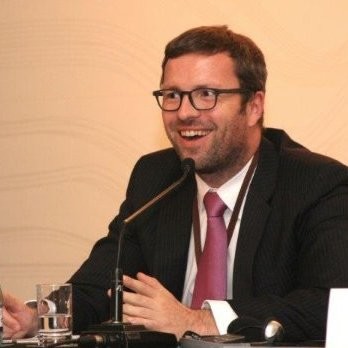In a nutshell
Unlocking sustainable growth in the region’s private sector requires reforms that facilitate innovation, the adoption of digital technologies and investments in human capital.
Companies should be given incentives to exploit the benefits of participating in cross-border trade and global value chains more broadly; better management practices can be instrumental in this regard.
Reforms to support these objectives must take account of sustainability and the global agenda to limit climate change and protect the natural environment more generally; but the state has a duty to ensure that there is a just transition.
Since the global financial crisis and the Arab Spring, gross domestic product (GDP) per capita has grown by only 0.3% a year in six representative economies of the MENA region: Egypt, Jordan, Lebanon, Morocco, Tunisia, and the West Bank and Gaza. That compares unfavourably with rates of 1.7% on average in middle-income countries and 2.4% in the developing economies of Europe and Central Asia (ECA).
Achieving higher and sustainable growth is particularly important in view of other economic challenges facing the region. Public debt has increased considerably over the last decade, accompanied by declining investment. More recently, the coronavirus pandemic has battered the region, further straining public finances. In addition, the Russian invasion of Ukraine affects the MENA economies through higher hydrocarbon prices, risks to food security and declining tourism.
Against this background, it is important that policy-makers exploit the potential of the private sector to propel the region towards greater prosperity.
The studies underpinning the new report draw on data from Enterprise Surveys of over 5,800 private firms across the above-mentioned six MENA economies conducted between late 2018 and 2020, largely before Covid-19. Although the data largely predate the pandemic, they remain extremely relevant as they offer a precise snapshot of the more structural features and weaknesses of the business environment. Resilience to the new shocks – and capacity to react – are likely to be affected by those structural features.
What is holding back the region’s private sector?
Surveyed firms identified political instability, corruption, competition from the informal sector and a lack of access to finance as the top obstacles to operations in MENA. Several key findings emerge from further in-depth analysis in the background studies. The results concern total factor productivity as well as the accumulation of human and physical capital.
Political connections and the region’s large informal sector undermine a level playing field. Firms with political connections extract relative gains from their privileged positions. The leveraging of influence also has the indirect effect of forcing competing firms to compensate with other means of political access. Competition from informal economic activity results in lower growth expectations and consequently lower probability of accessing finance, as evidenced by fewer loan applications.
Firms’ management practices, which are crucial for profitability, trade and innovation, lag behind best practices in benchmark countries. Moreover, average management practice scores have declined for all MENA countries since 2013. This can be attributed partly to government ownership, as even partial government ownership slows the introduction of best management practices. In addition, protection of well-connected incumbents from competition reduces incentives to adopt modern practices.
Many productive firms in the region fail to reap the scale and efficiency benefits from trade because of the weak business environment and state dominance of the economy. Innovation is one of those benefits, often associated with trade participation and integration in global value chains. Firms in MENA instead record very low innovation rates. Companies also lag behind their counterparts in other developing countries in terms of the adoption of digital technologies.
Moreover, MENA economies are making inadequate use of their human capital. Manufacturers provide formal training only to a small share of workers. Only a few companies invest in training their workers, and these tend to be larger, younger, foreign-owned and digitally connected exporting firms.
A significant share of companies are ‘financially autarkic’ (they don’t engage in borrowing or lending activity with other economic players), most opting to self-finance voluntarily. Financial autarky appears to be a response to a difficult operating environment characterised by stringent collateral requirements, complex application procedures and high interest rates.
MENA economies also have exceptionally low investment rates. Although high interest rates resulting from the build-up of public debt may be one cause of the decline in investment, an unfavourable business environment may drive both high interest and low investment rates.
Incentives for companies to decarbonise are weak too, as all of the region’s economies continue to subsidise fossil fuels and electricity generated from fossil fuels. Average corporate ESG (environmental, social and governance) responsibility in the region remains low. MENA firms are less likely than their ECA counterparts to adopt measures that reduce their environmental footprint. But some economies in the region do significantly better than others, indicating that there are opportunities for reforms to increase growth and make it more sustainable.
What can be done to unlock sustainable growth in the region’s private sector?
The report calls for MENA economies to lower regulatory barriers for businesses, promote competition and reduce disincentives emerging from political influence and informal business practices. Reforms that facilitate innovation, the adoption of digital technologies and investments in human capital are crucial. Companies should also be given incentives to exploit the benefits of participating in cross-border trade and global value chains more broadly. Better management practices can be instrumental in this regard.
Reforms to support these objectives will also need to take account of sustainability and the global agenda to limit climate change and protect the natural environment more generally. Greening MENA countries’ growth models will require sound public policy, strong state institutions and determined political leadership that provides incentives for companies and consumers to think green, promote clean investment and remove barriers that prevent a smooth transition to the green economy.
At the same time, the state has a duty to ensure that this transition process is just — through measures that help workers to take advantage of opportunities to obtain new, higher-quality jobs linked to the green economy, while also protecting those at risk of losing their jobs. Such measures include labour market policies, skills training, social safety nets and action to support regional economic development.
Further reading
European Bank for Reconstruction and Development, European Investment Bank and World Bank (2022) Unlocking sustainable growth in the Middle East and North Africa private sector: Evidence from the Enterprise Survey, published by the European Investment Bank.




